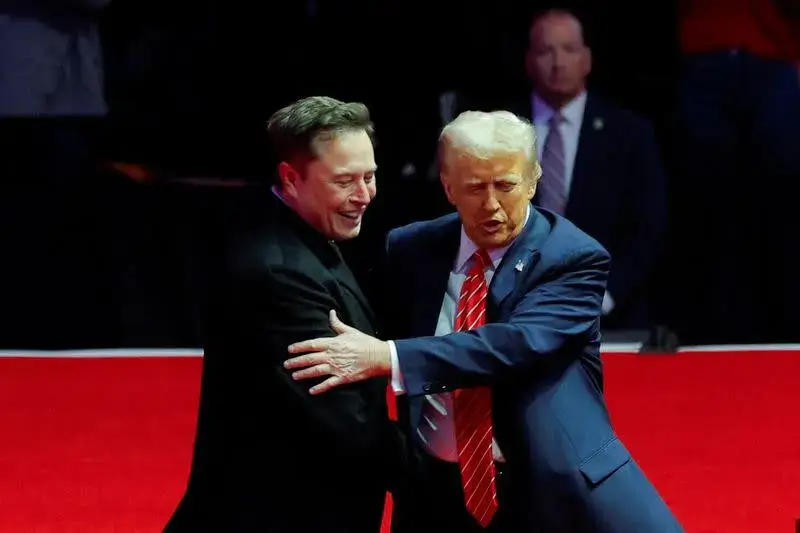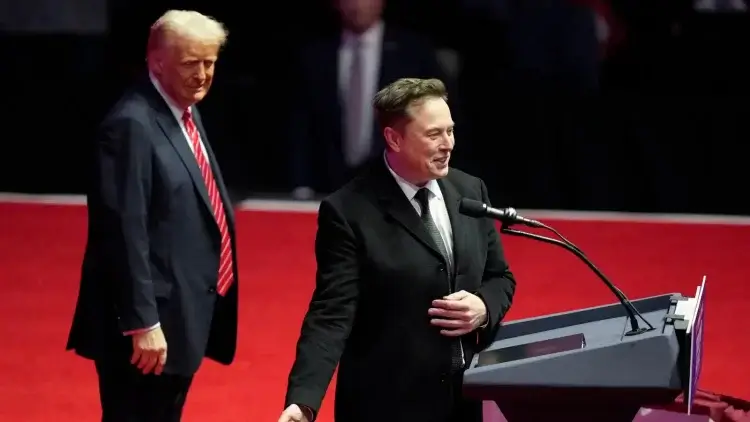How Trump and Musk Have Disrupted the Federal Workforce?
In recent weeks, two of the most influential figures in business and politics—Donald Trump and Elon Musk—have caused seismic shifts within the U.S. federal workforce. Through strategic firings, regulatory standstills, and workforce restructuring, these actions have had far-reaching consequences for government operations, businesses relying on federal contracts, and professionals navigating an increasingly volatile employment landscape. But what does this disruption mean for business leaders, productivity strategies, and work efficiency management?
In this article, we’ll explore the key implications of these changes for organizations, workforce planning, and operational continuity. We’ll also examine how companies can safeguard productivity with strategic planning and effective employee time tracking solutions.

The Impact of Leadership Disruptions on Government and Business Operations
Strategic Firings and Their Ripple Effects
One of the most immediate consequences of Trump and Musk’s influence has been the removal of top federal officials. These dismissals have not only reshaped internal dynamics within government agencies but have also introduced uncertainties for businesses that depend on federal regulations, grants, and contracts.
For example, when agency leaders are abruptly replaced, existing policies and project approvals are often paused. This leads to delays in federal funding, compliance adjustments, and contract uncertainty—all of which create risks for private-sector companies reliant on government collaboration. Business owners and managers must now account for these shifts when planning long-term investments and operational strategies.
Mass Resignations and Talent Drain
Beyond firings, a less visible but equally significant phenomenon has emerged: voluntary resignations. Tens of thousands of federal employees have chosen to leave their positions in response to the rapidly changing work environment. This exodus not only affects government efficiency but also increases competition for skilled professionals in private industries.
Organizations should recognize the potential talent migration from public to private sectors and capitalize on it by offering structured onboarding, competitive compensation, and advanced time management tools to ensure effective workforce integration.
Key Business Challenges Stemming from Federal Workforce Disruptions
Operational Uncertainty for Government-Dependent Industries
Industries that rely on federal stability—such as healthcare, infrastructure, and defense—face operational risks due to workforce disruptions. Contract delays, funding freezes, and regulatory inconsistencies can lead to bottlenecks, cost overruns, and uncertainty in project timelines.
To mitigate these risks, businesses should:
- Diversify revenue streams to reduce dependency on federal contracts.
- Employ robust tracking systems, such as time recording software, to enhance work efficiency amid disruptions.
- Develop contingency plans for regulatory shifts that could impact project timelines.
By leveraging adaptive work strategies, businesses can reduce the operational risks associated with governmental restructuring.
Remote Work, Productivity, and the Need for Tracking Solutions
As federal employees transition out of government roles, many are shifting towards private consulting, contracting, or freelancing opportunities. This has triggered a growing demand for flexible work arrangements and digital job tracking systems.
For business leaders managing remote or hybrid teams, accurate measurement of productivity becomes increasingly vital. Implementing automated time tracking software can help organizations efficiently monitor work hours, optimize task management, and ensure accountability across distributed teams.
How Businesses Can Adapt: Efficiency Strategies and Workforce Planning
Optimizing Workforce Management Amid Federal Uncertainty
To remain competitive, companies should prioritize adaptable work structures, employee retention strategies, and advanced technological integration. Key steps include:
- Implementing an employee time tracking system to improve task allocation and resource utilization.
- Encouraging skill development among employees migrating from federal roles to optimize their transition into private-sector environments.
- Building resilience against government-led disruptions by establishing agile workforce policies.
These measures ensure that companies sustain high efficiency even in unpredictable environments.
Leveraging Technology for Sustainable Productivity
Given the shifting workforce trends, digital tools designed for workflow optimization are becoming indispensable. Businesses should integrate time tracking programs to analyze productivity metrics and streamline task execution.
For instance, in sectors where time-sensitive projects are crucial—such as legal services, consulting, and IT—automated solutions allow managers to assess operational efficiency without manual oversight. This data-driven approach not only improves performance tracking but also strengthens profitability through enhanced work transparency.
Navigating Workforce Disruptions with Strategic Planning
Leadership changes at the federal level inevitably create ripples throughout the broader economic landscape. Organizations that proactively adapt to this volatile environment through workforce flexibility, technological integration, and strategic risk mitigation will position themselves for long-term success.
One of the most effective ways to ensure stability during workforce transitions is by implementing time tracking software for small businesses to maintain operational continuity. If your company is looking for the best way to enhance productivity and streamline work processes, explore free trial of a leading time tracker to take control of your organization’s efficiency today.

